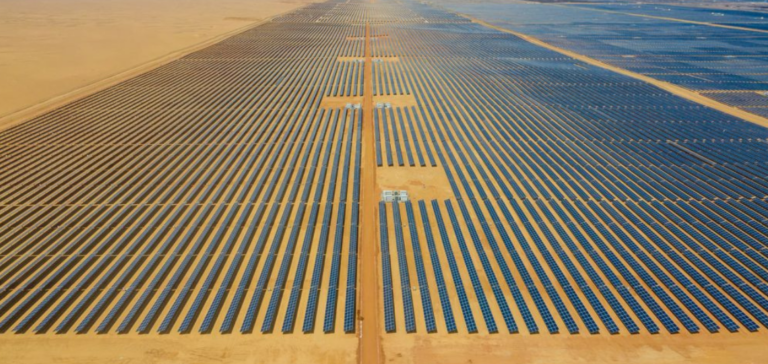In a move towards energy transition, the United Arab Emirates recently inaugurated the Al Dhafra solar power plant, billed as one of the world’s largest solar installations. The inauguration comes at a particularly opportune time, just before the UN Climate Change Conference (COP28).
A Contrasting Energy Transition Project
While the Emirates are known for their rich oil industry, this initiative marks a significant turning point in their energy policy. The project, located 30 kilometers south of Abu Dhabi, is a technical and environmental feat. The 4 million double-sided photovoltaic panels, covering an area of 21 square kilometers, have a production capacity of 2 gigawatts. This energy is sufficient to power around 160,000 homes, reducing greenhouse gas emissions by almost 2 million tonnes annually.
International Collaboration and Environmental Impacts
The project is the result of an international collaboration, with a majority stake held by UAE state-owned companies TAQA and Masdar, and a significant share held by China’s Jinko Power Technologie and France’s EDF Renouvelables. EDF Renewables CEO Bruno Bensasson emphasizes the plant’s positive impact on the environment, equivalent to taking 800,000 cars off the road.
Emirates Environmental Strategy: Ambitions and Realities
However, this progress in renewable energies contrasts with the Emirates’ plans to increase oil production. The country plans to significantly increase its crude oil production from three to five million barrels per day by 2027. This contradiction raises questions about the coherence of the country’s environmental strategy, particularly with regard to its commitment to achieving carbon neutrality by 2050.
Al Dhafra Power Plant Advanced Technologies
The Al Dhafra plant is equipped with advanced technologies, increasing its efficiency by 20% compared with traditional solar installations. Indeed, these technologies include mobile solar panels, cleaned by robots, optimizing the capture of solar energy. Abdulaziz Al-Obaidly, Masdar’s Director of Operations, highlights these technological innovations.
In addition, the Emirates’ Position on the International Scene of the Fight against Climate Change.
Sultan Al Jaber, head of Masdar, also plays a key role as chairman of COP28 and head of the ADNOC oil company. Moreover, its position at the crossroads of the oil industry and renewable energies is representative of the challenges and opportunities that characterize the Emirates’ energy transition.
The inauguration of the Al Dhafra solar power plant in the United Arab Emirates illustrates the complexity of the energy transition in an oil-rich country. While this initiative marks a significant step towards renewable energies, it coexists with plans to expand oil production, raising questions about the balance between economic development and environmental responsibility. COP28 will be a decisive moment for assessing the Emirates’ real commitment to the fight against climate change.






















